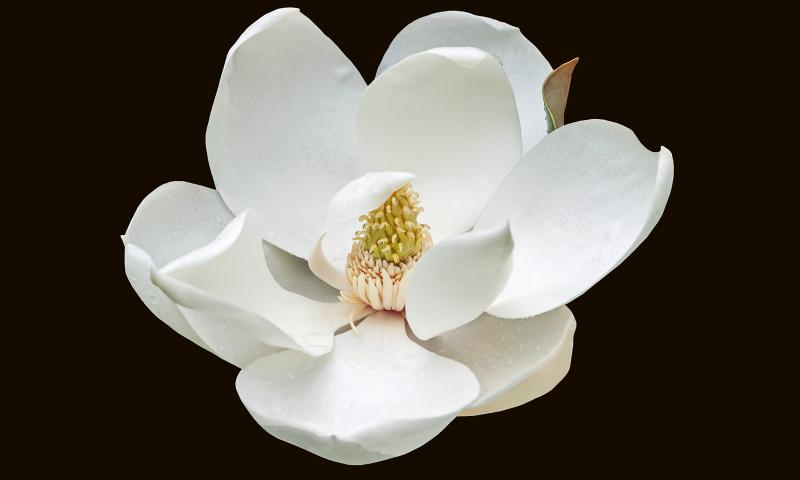 />
/>
Botanical Characteristics
The Magnolia Virginiana, commonly known as the sweetbay magnolia, is an alluring evergreen to deciduous tree that stands out in the landscape due to its striking flowers and glossy leaves. This species of magnolia typically grows to a height of 10 to 20 meters, featuring alternately arranged, lance-shaped leaves that are green on the top and silvery beneath, creating a shimmering effect in the breeze. The tree's most notable feature is its large, creamy-white flowers that bloom in late spring and early summer, exuding a lemony scent.
Chemical Composition
Magnolia Virginiana is rich in a variety of phytochemicals, including magnolol and honokiol, which are two aromatic polyphenols found in its bark and leaves. These compounds are known for their antioxidant properties. The plant also contains essential oils, particularly in the flowers, contributing to its characteristic fragrance and potential therapeutic properties.
Habitat
Sweetbay magnolia is native to the southeastern United States, thriving in the coastal plains from Massachusetts to Texas. It prefers moist, acidic soils and is commonly found in wetlands, swamp margins, and along streams, demonstrating a preference for full sun to partial shade environments. Its adaptability to wet conditions makes it distinctive among magnolia species.
Taste
The petals of Magnolia Virginiana are edible and have a spicy, gingery flavor. They can be used in salads or as a garnish, offering a unique culinary experience. The bark and leaves, which contain the bioactive compounds, have a bitter and pungent taste.
Historical Facts
Magnolia Virginiana holds a significant place in history, especially among Native American tribes who used it for various purposes, including as a medicinal plant. European settlers quickly adopted it, using the magnolia bark in traditional remedies. Its aromatic wood and flowers have also been used in furniture making and perfumery, respectively.
General Health Benefits
Magnolia Virginiana is appreciated for its general health-promoting properties. The bioactive compounds like magnolol and honokiol are noted for their stress-relieving and antioxidant activities. These properties suggest that the plant may help support overall well-being by combating oxidative stress and promoting relaxation.
Indications for Use
Magnolia Virginiana can be used as a dietary supplement or in aromatherapy. In the form of teas or extracts, it is consumed for its potential to aid relaxation and sleep, thanks to its calming scent and properties. In skincare, magnolia extract is valued for its antioxidant effects, which may help protect the skin from free radical damage and support a healthy complexion.
Conclusion
Magnolia Virginiana, with its enchanting flowers and robust phytochemical profile, stands as a testament to nature’s beauty and healing potential. While it serves as a beacon of the rich biodiversity of the southeastern United States, it also continues to be a subject of interest for its multifaceted benefits and uses. Whether in the garden for its aesthetic appeal or used in various forms for its potential health benefits, Magnolia Virginiana remains a cherished species in the botanical and wellness communities.
